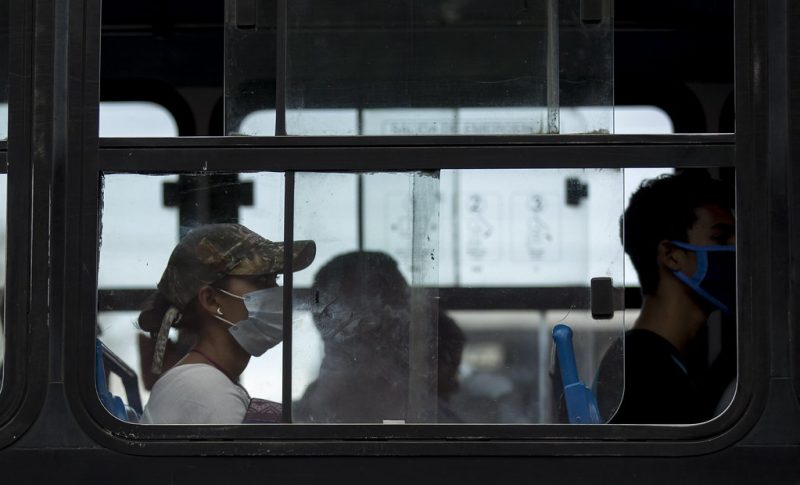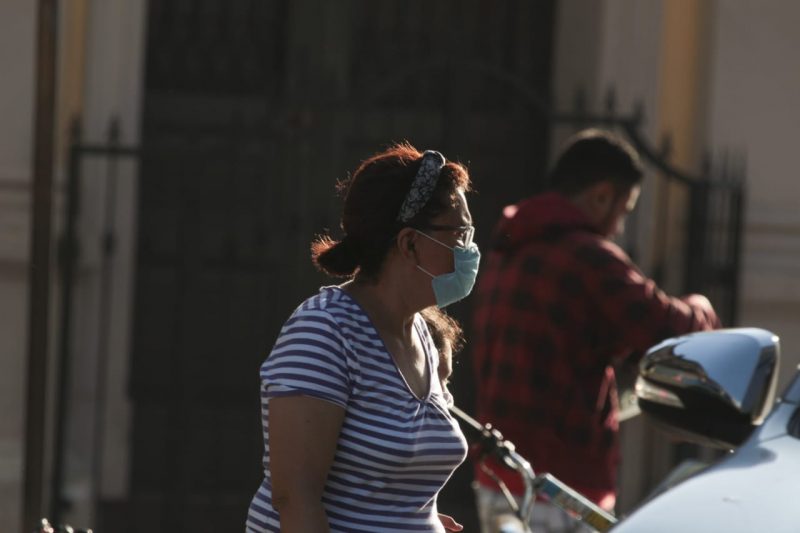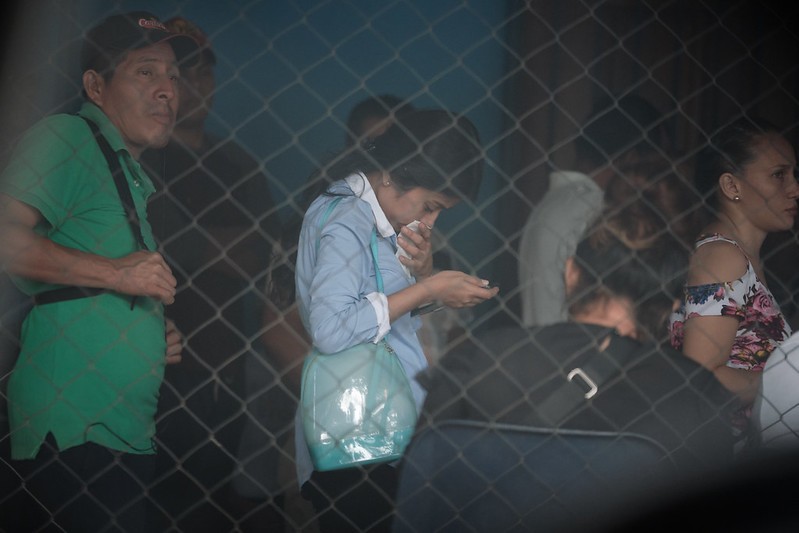Nicaragua Needs Massive Testing for COVID-19

Although the Nicaraguan government currently reports only 5 positive cases, the true number of COVID-19 cases remains unknown.
By Jorge A. Huete-Perez* (Confidencial)
HAVANA TIMES – Diagnostic testing for COVID-19 is considered an essential tool in the fight against the pandemic that, as of March 31, has infected over 900,000 people and caused the death of more than 47,000 globally.
Testing, along with social distancing and contact tracing have been the corner stone of the strategy for combatting the pandemic. Thus, after only five days of the epidemic being declared a pandemic, Dr. Tedros Adhanom Ghereyesus, director general of the World Health Organization (WHO) made an urgent call for all countries to consider diagnostic testing for coronavirus a major priority.
The importance of timely detection of any viral outbreak has been recognized by the international scientific community, and is noteworthy in the experiences of countries that have achieved successful management of the epidemic (Singapore and South Korea, among others), because they carried out thousands of tests from the very beginning. On the contrary, those countries deficient in managing the epidemic, such as the US and Spain, did little testing or tracking of outbreaks in a timely manner which resulted in hospitals and clinics overflowing with patients and causing an intolerable overload for medical personnel.
The use of the technique known as Polymerase Chain Reaction (PCR) for the diagnostic testing of COVID-19 has been key. This molecular biology technique detects the presence of the SARS-CoV-2 virus through tiny quantities of viral genetic material (RNA) obtained from a sample taken by a cotton swab from the nose and throat of infected persons. Due to being a highly versatile technique invented some decades ago, some of even the poorest countries now have the capability to use this kind of diagnostic tool.

In Nicaragua, the Ministry of Health (MINSA) began employing techniques using PCR for detecting various pathogens beginning in the 1990s with the aid of international financing and has benefited from decades of collaboration with prestigious United States’ laboratories.
It is therefore beyond all reason that despite having the technical capacity to detect coronavirus, the government has opted to not implement systematic, comprehensive and timely diagnostic testing, which should have begun this past February when the virus appeared in the region. The situation became even more grave when Nicaragua was left totally exposed as a result of the failure to establish containment measures such as closing borders, restricting the arrival of tourists from affected countries or establishing quarantines, such as other Central American governments have done.
Although the government recognizes only 5 positive cases, the true number of COVID-19 cases in Nicaragua remains unknown. The scarcity of cases can only be explained by a lack of sufficient testing. It is deplorable that MINSA officials admitted 4 days ago that only some 200 tests have been carried out, when, at this stage they should have carried out at least 3 to 5 thousand tests if one considers the testing capacity of even one modest laboratory.
Keep in mind that what the government refers to as “positive cases” are those cases that they have managed to identify, or perhaps the number they find convenient to admit exist. After all, withholding information and spreading misinformation has been the longstanding practice. Even worse are the government’s decisions to program events with massive attendance, in direct contradiction to WHO recommendations.
These kinds of decisions, based purely on political scheming and in disregard for scientific and technical criteria which should be taking precedence, have caused immense social and economic harm to the country on prior occasions. Good examples are the failed Inter-oceanic Canal Project, the destruction of natural reserves and the financial ruining of the social security system – all of which have brought about the institutional debacle in which the country finds itself.
Despite such a marked delay, it is imperative that massive testing begin immediately. It could at least be done randomly at the airports, borders crossings, and in the most populated neighborhoods; patients with pneumonia could also be prioritized for testing as their clinical profile overlaps with COVID-19.
Although the most logical approach, from an epidemiological point of view, was to carry out comprehensive testing in the first weeks of the outbreak in Central America, it’s still advisable to discover the epidemic’s principal hotspots. This is important not only because without a correct diagnosis we can’t know the true number of infections, but because without knowing, we aren’t able to take the necessary actions. Without adequate sampling, we won’t know the true magnitude of the epidemic within Nicaragua.

Fortunately, other countries now have more rapid and less expensive serologic testing for detecting COVID-19 and diagnostic kits could easily be imported. While the PCR method, which provides results in 3 to 4 hours, requires a well-equipped laboratory and highly trained personnel, the serologic tests produce results in 5 to 15 minutes, are inexpensive and don’t require specialized personnel. These rapid tests are now in use in Europe and could be incorporated into general detection strategies, aiding central laboratories when they become saturated.
In addition, these rapid tests (PCR or immunochromatographic) which can detect the virus or antibodies against the virus would also reveal the spread of COVID-19, providing vital information for public health personnel.
Despite the difficult situation in which Nicaragua has found itself, overwhelmed by 24 months of socio-political crisis since the April 2018 Rebellion, the citizens themselves have adopted their own methods of prevention with much wisdom and courage. In addition, the Academy of Sciences, the Multidisciplinary Scientific Committee and various medical and civil society organizations have guided the population regarding the pandemic.
It is also important to include in this struggle (against coronavirus) the broad range of national scientific capacity that has been growing over the last forty years through continual research, representing an unquestionably valuable resource within our universities. These researchers can contribute knowledge and study the situation, from an independent epidemiologist monitoring the presence of COVID-19 and the status of concomitant morbidities in hospitals and clinics, to a specialist in biotechnology identifying the coronavirus mutations which to date has 8 known variants. Molecular biologists can determine the genomic sequence and mutations of coronavirus within Nicaragua, explaining, for example, how the different strains of the virus enter human cells, which could aid in determining future medications.

Medical teams could conduct clinical trials in conjunction with “Solidarity”, an international consortium testing the effectiveness of various pharmaceuticals against the virus. Interdisciplinary teams of students in engineering, biology and medicine could reconstruct or create low-cost ventilators along with other practical solutions. Activating the national research system to address the epidemic would serve to improve patient primary care and survival.
We are in urgent need of producing specialized protective equipment so that health professionals can safely confront the escalating surge of infection that could occur within a few weeks. It’s been shocking and unpardonable that doctors, health personnel and health brigade workers have been thrown into the battle without any defenses such as masks or gloves or other mandatory supplies.
At the same time, one hopes that other measures adopted by neighboring countries, such as closing borders, reducing international flights, and lower numbers of tourists has reduced the spreading of the virus toward Nicaragua, resulting in a delay of the COVID-19 impact. As testing becomes more generalized and the number of confirmed cases increases, a clearer image of the rate at which the virus is spreading in Nicaragua will appear.
*PhD. Molecular Biology





